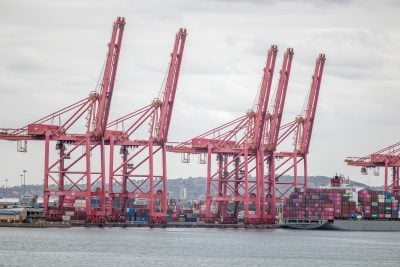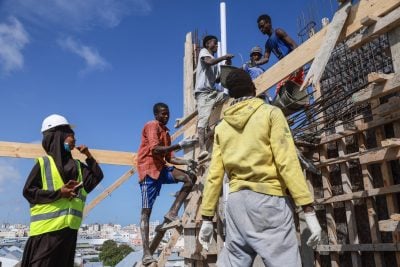As the global economy shows resilience in navigating a fragile recovery, the International Monetary Fund’s latest World Economic Outlook (WEO) projects a modestly improved near-term forecast but warns of persistent vulnerabilities, especially for Sub-Saharan Africa.
Unveiled at a press briefing on October 14, 2025, the IMF’s updated projections show global growth slowing from 3.3% in 2024 to 3.2% in 2025, and further to 3.1% in 2026. While this marks a slight upward revision from April’s forecast, it remains below pre-policy-shift expectations. The subtext from IMF leadership was measured: the rebound is real, but uneven.
Speakers included Pierre-Olivier Gourinchas, chief economist and director of the research department at the IMF; Petya Koeva-Brooks, deputy director of the research department; and Deniz Igan, division chief of the research department.
According to the outlook, the global economy has shown signs of resilience despite fears expressed in April around the projected negative impact from the US tariffs. This has led to a modest upward revision of global and emerging market forecasts since April. Outlook for the sub-Saharan Africa region is however weighed down by trade disruptions, aid uncertainty, and uneven reform momentum.
“The global economy is adjusting to a landscape reshaped by new policy measures,” said Gourinchas during the briefing. “But the overall environment remains volatile.”
Global rally, uneven regional growth
Global growth is projected to slow from 3.3% in 2024 to 3.2% in 2025 and 3.1% in 2026 with advanced economies expected to grow around 1.5%, while emerging markets and developing economies are forecast to expand just above 4% with projected growth driven largely by Asia’s rebound.
For emerging markets, the forecast of a 4.2% growth in 2025 represents a cumulative upward revision of 0.6 percentage point from April. While this is a positive sign signposting resilience, it remains 0.2 percentage points below the October 2024 forecast, with low-income countries facing the steepest downgrades.
Sub-Saharan Africa: Forecast flat for 2025
Sub-Saharan Africa’s growth is expected to remain unchanged at 4.1% in 2025, before edging up to 4.4% in 2026. While this marks an upward revision of a 0.5 percentage point from April, it is still 0.1 points below the IMF’s October 2024 projection.
The region’s flat forecast does not however paint the full picture as it masks sharp divergences. Nigeria’s growth outlook, for instance, has improved, thanks to what the outlook attributed to a cocktail of “supportive domestic factors, including higher oil production, improved investor confidence, a supportive fiscal stance in 2026, and …its limited exposure to higher US tariffs.”
But the picture is more sobering elsewhere with many economies in the region facing downward revisions due to “the changing international trade and official aid land scape.”
The expiration of the African Growth and Opportunity Act (AGOA) in September has also been highlighted as a key blow and contributor to the slowdown in growth.
The IMF warns in its October 2025 World Economic Outlook (WEO) that halting that preferential U.S. market access will have “sizable negative effects,” particularly for countries like Lesotho and Madagascar.
Reform momentum and policy gaps
The IMF notes that newly introduced fiscal and structural reforms are “only beginning to take effect,” contributing to a subdued medium-term outlook. Risks remain tilted to the downside, including inflation persistence, financial market volatility, and geopolitical tensions.
“Policymakers are urged to restore confidence through credible, transparent, and sustainable policies,” said Koeva-Brooks. “Fiscal buffers should be rebuilt. Central bank independence should be preserved.”
The Fund also cautions that while industrial policy may have a role, “full consideration should be given to opportunity costs and trade-offs.”
Outlook: Opportunity despite headwinds
As the global economy rallies, Sub-Saharan Africa stands at a crossroads. Nigeria’s reform-driven momentum with its positive impact offers a glimpse of what’s possible when transparent macroeconomic policies are pursued with gusto. But for the broader region, the challenge is clear: accelerate reforms, rebuild buffers, and navigate a shifting trade landscape in the light of shifting geopolitical considerations or risk falling further behind.
Want to continue reading? Subscribe today.
You've read all your free articles for this month! Subscribe now to enjoy full access to our content.
Digital Monthly
£8.00 / month
Receive full unlimited access to our articles, opinions, podcasts and more.
Digital Yearly
£70.00 / year
Our best value offer - save £26 and gain access to all of our digital content for an entire year!

 Sign in with Google
Sign in with Google 



